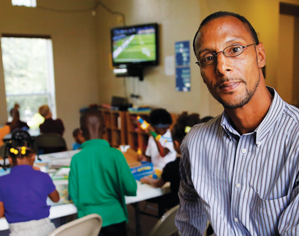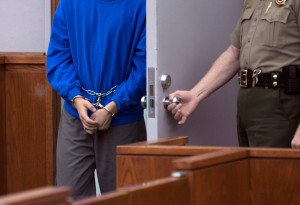Brain Science is Reforming Juvenile Justice Policy and Practice
A series of recent landmark cases in the U.S. Supreme Court has evolved to change our legal responses to juvenile offending. They have abolished the death penalty for crimes committed during adolescence, found mandatory life-without-parole sentences for murder in violation of the 8th Amendment, and eliminated life-without-parole sentences for crimes less than murder. In Massachusetts, life sentences for juveniles were ruled unconstitutional, and the review of cases in which those sentences were given in the past has already begun. A significant part of the argument for these decisions included an understanding of adolescent brain development. While society’s attitudes will ultimately dictate the shape of law, science can be used to confirm and dispel common ideas about teenage behavior to forge a more scientifically sound and financially viable system for adolescent reform.
Scientists know that the adolescent brain is still developing, that it is highly subject to reward- and peer-influence, and that its rate of development varies widely across the population. They have developed basic tools that offer data with which to judge the potential for juvenile desistance, recidivism, and rehabilitation.
With its ability to examine the workings of the teenage brain, neuroscience is improving our understanding of adolescents, and potentially, juvenile offenders. Through their window into the brain, neuroscientists understand, for example, that adolescents mature at markedly varied rates. The presumed trajectory of brain development, demonstrated in existing “bright line” age cut offs for voting, military service, and drinking, however, is not reflective of this variability in brain maturity. Similarly, neuroimaging research by CLBB faculty (Somerville, 2010) clarifies that it is teenagers’ heightened vulnerability to reward that drives risky behavior, contrary to longstanding beliefs that teenagers are unable to gauge risks. They can often recognize risks, but incomplete development of brain mechanisms related to modulation of impulsive behavior reduces their tendency to heed those risks.
Science may also help us understand which juvenile offenders are likely to commit future crimes and which may not. A longitudinal study, “Pathways to Desistance” (Mulvey, 2011), has collected significant data on factors such as substance abuse and instability in daily routine that lead to youth recidivism. The seminal paper, “Rewiring juvenile justice: the intersection of development neuroscience and legal policy” (Cohen and Casey, 2014), elucidates how key new scientific findings about the development of the adolescent brain may inform policy.
How Can the Law Reflect What We Known About the Brain?
Scientists and clinicians interested in the practical application of neuroscience have created a substantive body of work that should inform juvenile justice policy. The MacArthur Foundation Research Network on Adolescent Development and Juvenile Justice established and expanded the knowledge base on adolescents and crime, and dissemination of that knowledge to juvenile justice practitioners and policy-makers has played a critical role in policy change. Organizations like the National Conference of State Legislatures have summarized research for application to law, such as “bright line” age limits. Nonprofit groups such as the Juvenile Law Center use brain science research to produce recommendations for the improvement of the juvenile justice system. Models for Change, a multi-state initiative relying on a network of court officials, legal advocates, and researchers, produces research-based tools and techniques to make juvenile justice systems more fair, effective, rational, and developmentally appropriate. Other scientific groups, including the American Association for the Advancement of Science, are examining juvenile justice through their existing brain science lens. And the National Academy of Science’s National Research Council recent report, “Reforming Juvenile Justice,” collates all recent research to promote a developmental agenda for juvenile justice in the future.
Researchers have taken to the popular press, as well, to advance a developmentally appropriate juvenile justice system in the areas of prevention and treatment. Op-eds such as “Why teenagers act crazy” and “Friends can be dangerous” (both New York Times, 2014) seek to communicate understandings about the brain to the public to protect adolescent development and prevent adolescent crime. Other pieces, including “How solitary confinement hurts the teenage brain” (The Atlantic, 2014); The “Prisoners of profit” series (Huffington Post, 2013) and “Locking up kids for life” (Boston Globe, 2014), by Harvard Law School Professor and CLBB faculty Nancy Gertner, all seek to address imminent legal- and treatment- related issues within the juvenile justice system. As part of PBS’s Brains on Trial programming with Alan Alda (2013), CLBB co-director Judith Edersheim and CLBB faculty member Gene Beresin authored important commentary on teens and criminal responsibility, mental health services for youth in detention, assessing violence risk in kids, and the workings of the adolescent brain. Even prominent voices like the New York Times editorial board have taken strong stands on social issues where the science is clear, such as juvenile solitary confinement reform (2014).
Young Adult Diversion Program

We are faced with a crucial social and legal policy dilemma. One the one hand, with the onset of puberty comes increases in misconduct that can be charged as delinquency matters if the young person is deemed a juvenile (under age 18) or criminal matters if deemed an adult (age 18 and above). On the other hand, misconduct (both property crimes and crimes against persons) peaks between age 16 and 21 but then sharply self-desists with the developmental confluence of neurodevelopment and social maturation.
Although there is no scientific basis for drawing the crucial “bright line” for full criminal culpability at age 18, the consequences for being deemed either a juvenile or an adult are immense. Young people arrested at or after age 18 accrue criminal records for both major and minor crime with negative long-term consequences. Criminal records restrict access to vocational training and employment, educational loans and admissions, military service, public and private housing, immigration/asylum status, and more.
Current practices regarding older adolescent and young adult offenders inadvertently increase the likelihood that they will be processed through the courts, serve terms of incarceration during critical young adult developmental years, and become susceptible to crime-oriented social networks. Successful diversion programs prevent this penetration in the criminal justice system by providing alternative pathways for accountable rehabilitation.
A growing body of evidence shows that these non-trial and non-prison options result in lower re-offending, or recidivism, which in turn enhances community safety as the young adults engage in education and meaningful employment.
The Center for Law, Brain & Behavior at Massachusetts General Hospital is partnering with the Suffolk County District Attorney’s Office, which covers the cities of Boston, Chelsea, Revere and Winthrop, to disrupt the “cradle to prison pipeline” through a pilot diversion program for emerging adults 18 to 25 years old. Initially, 50 offenders under the jurisdiction of the Boston Municipal Court will be assessed for motivation and rehabilitation potential and then selected to participate in educational, vocational, behavioral health supports provided by a strong network of community partners.
The pilot program will debut in a neighborhood courthouse in Boston and then be extended to other courthouses in Boston and elsewhere in Suffolk County, as funding permits. This initiative is the first in Suffolk County and only the second in Massachusetts to serve young people in the 18 to 25 age group.
Benefits of diversion programs:
- Breaking the costly cycle of justice-system involvement for eligible individuals
- Decreasing crime, incarceration, and recidivism rates
- Improving public health and safety
- Increasing cross-system collaboration to create access to community-based services
- Enhancing relations between community members and law enforcement
- Lessening the burden on criminal justice systems
- Saving taxpayer dollars
National Conference of State Legislatures, August 2023
“The goal is always to keep kids out of the system and give them the opportunity to succeed. I wouldn’t be doing this if I didn’t think it was going to work. I know it’ll work, and I believe in very short order we’ll go from Dorchester to Roxbury to Chelsea, and then all through Suffolk County.” – Kevin R. Hayden, Suffolk County District Attorney






